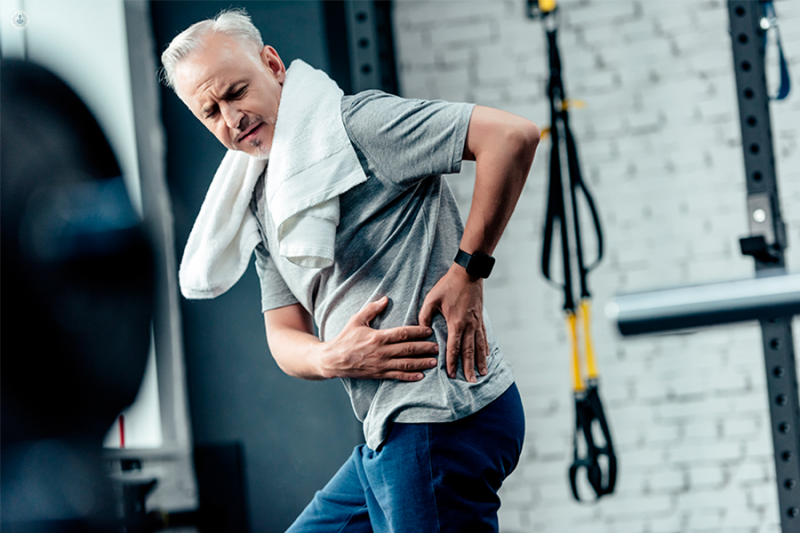How to protect your hip while running
Written by:Running is one of the easiest sports to get into and is great for your fitness levels and heart health. Unfortunately, running can also often result in hip injuries – which left untreated, can cause real problems down the road. We interviewed expert orthopaedic surgeon Mr Rishi Chana to find out how exactly running leads to hip injury, and what you can do to protect yourself:

How can running cause hip injuries?
There are a wide variety of hip injuries, and they can cause different kinds of pain.
When a sharp pain occurs during running, this is a sign that something has torn in the joint. The hip is essentially a ball and socket joint, so if you have a slightly egg-shaped oval hip, then as the ball moves into the socket, you can get jarring and that can cause labral tears or cartilage damage
Sometimes a hip injury isn’t apparent immediately but expresses itself as a dull pain afterwards that emerges that evening after running or over the next few days. This is often caused by repetitive movements which result in swelling and bruising in the area. To avoid this kind of pain you have to be quite careful of how much running you do and the sort of running you do.
It’s also worth noting that the pain may not be related to the hip itself. While a sharp pain in the groin crease or skin crease of the pelvic region does typically indicate internal hip pain, some patients get pain on the outside and outer buttock area – and that can instead be gluteal tendon pain or referred hip pain.
How do you prevent hip injuries while running?
There are a number of things you need to get in order to prevent hip injuries while running:
- Footwear. Make sure you have a good biomechanical assessment for running shoes, insoles and preparation in planning for the running time itself.
- Technique. Visit a good running school and get someone to look at how you’re moving so that you get into good habits. If you have imbalance and your biomechanical assessment is not correct, you can develop core gluteal tendon problems such as trochanteric bursitis and ITB syndrome problems.
- Intensity . Have a good running plan before you start, and don’t ramp up too quickly. Make sure you keep a 10% rule – where you never increase your weekly running mileage by 10%.
- Nutrition. Nutrition is vital to bone health and will help protect you from stress fractures. This involves making sure you get adequate amounts of vitamin D and calcium – especially if you have a family history of osteoporosis.
- Your exercise regime overall . Make sure running isn’t the only form of exercise you do. Having a varied exercise plan will make a big difference – this helps you increase your mobility as well as tone up the muscles you will use while running. Physiotherapy has been shown to be particularly helpful, in studies published in the Lancet and the British Medical Journal.
Unfortunately, some people will be more susceptible to hip injury than others. If you have a slightly egg-shaped hip bone, this can sometimes rub up against the socket, causing a labral tear. For such patients it is even more important that you give yourself plenty of rest and ensure your technique is correct.
When do you need treatment for a hip injury?
Treatment is needed when all self-help treatment and conservative management treatments have not really helped. If physiotherapy is not getting you to the goal, that's the time that a surgeon gets involved.
Surgery is particularly important if you have an egg-shaped hip bone, because if this is left, over time this can lead to premature arthritis. Coming sooner rather than later is very important to avoid problems further down the road.
When you visit the orthopaedic surgeon for a consultation, we will assess any damage with an MRI scan. As for the surgery itself, we will always do our best to preserve the cartilage and the joint for as long as possible. We can address the primary problem by removing the bone and repairing the labrum. Following this, we can use biological scaffolds and collagen scaffolds to repair the cartilage – and keep you functional and natural for as long as possible.


